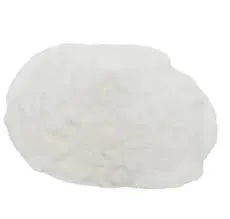
Окт . 09, 2024 04:46 Back to list
Possible Side Effects of Hydroxypropyl Methyl Cellulose Use and Safety Considerations
Understanding the Side Effects of Hydroxypropyl Methylcellulose
Hydroxypropyl methylcellulose (HPMC) is a semi-synthetic polymer derived from cellulose, widely used in various pharmaceutical, food, and cosmetic applications. In the realm of pharmaceuticals, HPMC serves as an excipient in tablets and capsules, a binder in formulations, and a thickening agent in many products. While it is generally regarded as safe and is well-tolerated by most individuals, it is essential to be aware of potential side effects that may arise from its use.
Understanding the Side Effects of Hydroxypropyl Methylcellulose
In the context of dietary consumption, HPMC is often utilized as a food additive, where it serves to improve texture and act as a stabilizer. While most consumers do not experience significant side effects from food-grade HPMC, excessive intake can potentially lead to gastrointestinal discomfort. Some individuals may report symptoms such as bloating, gas, or mild stomach cramps. These issues are generally associated with overconsumption rather than normal use. Thus, moderation is key to preventing discomfort.
hydroxypropyl methyl cellulose side effects

For those using HPMC in pharmaceutical applications, it is crucial to consider its interaction with other medications. HPMC can impact the bioavailability of certain drugs. By delaying the release of active ingredients, it may affect how quickly and effectively medications are absorbed into the bloodstream. Patients taking medications that require swift absorption should consult with their healthcare providers to ensure that HPMC-containing products do not interfere with their treatment plans.
Another concern with HPMC is its impact on certain medical conditions. For individuals with specific gastrointestinal disorders, such as irritable bowel syndrome (IBS) or bowel obstructions, HPMC may worsen symptoms due to its thickening properties. In such cases, individuals should consult a healthcare professional before using products containing HPMC.
Additionally, while HPMC is not a recognized allergen, there have been anecdotal reports of hypersensitivity. Symptoms of hypersensitivity may include difficulty breathing, swelling of the face, lips, or throat, and anaphylaxis in severe cases. Though rare, these reactions necessitate immediate medical attention. It is advisable for individuals with a history of allergies to monitor their reactions closely when first using products containing HPMC.
In conclusion, while hydroxypropyl methylcellulose is a commonly used, safe agent in various applications, it is essential to be aware of its potential side effects. Allergic reactions, gastrointestinal discomfort, and interactions with medications are among the primary concerns. As with any product, individuals should use HPMC-containing formulations with caution and consult healthcare professionals if they have underlying health conditions or concerns about interactions with other medications. By being informed and vigilant, users can safely enjoy the benefits that HPMC has to offer.
-
What is HPMC?
NewsJun.06,2025
-
Understanding Redispersible Powder: The Future of Construction Materials
NewsJun.06,2025
-
Understanding RDP Powder: The Ultimate Solution for Your Construction Needs
NewsJun.06,2025
-
Pure HPMC: The Ideal Solution for Modern Construction and Building Materials
NewsJun.06,2025
-
Methyl Hydroxyethyl Cellulose: A Versatile Chemical Compound
NewsJun.06,2025
-
Hydroxyethyl Cellulose Power: The Essential Chemical for Various Industries
NewsJun.06,2025







